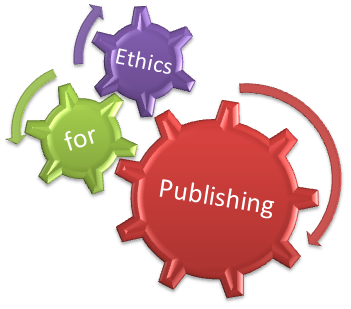Vibration Analysis of Shaken Baby Syndrome
(*) Corresponding author
DOI: https://doi.org/10.15866/irecos.v18i2.24411
Abstract
Shaken Baby Syndrome is a serious form of abusive head trauma caused by violent shaking of an infant, resulting in subdural hematoma, retinal bleeding, and brain swelling. In contrast, slow swaying motions soothe, console and comfort the child. In this paper, safe margin for relative displacement response caused by either displacement excitations or impulse excitations to the baby's head are studied using a multi-body dynamics approach. Using the proposed mathematical model, the dynamic behavior of the baby's brain is numerically simulated. In addition, the critical frequency and dynamic behavior due to applied initial velocity has been studied.
Copyright © 2023 Praise Worthy Prize - All rights reserved.
Keywords
References
S. Robben. "Diagnostic Imaging in Child Abuse Non Accidental Trauma." Radiology Assistant, Radiology Department of the Maastricht University Hospital in the Netherlands (http://www.radiologyassistant.nl/en/p43c63c41ef792/diagnostic-imaging-in-child-abuse.html. [16-Sep-2015]).
Stewart TC, D. Polgar, J. Gilliland, D.A. Tanner, M.J. Girotti, N. Parry and D.D. Fraser "Shaken baby syndrome and a triple-dose strategy for its prevention." Journal of Trauma, vol. 71, pp. 1801-1807, 2011.
C. Lee, R. G. Barr, N. Catherine and A. Wicks. "Age-related incidence of publicly reported shaken baby syndrome cases: is crying a trigger for shaking." Journal of Developmental & Behavioral Pediatrics, vol. 28, pp. 288-293, 2007.
S.F. Carbaugh. "Understanding shaken baby syndrome." Advances in Neonatal Care, vol. 4, pp. 105-117, 2004.
N. Watson, T. Wells and C. Cox "Rocking chair therapy for dementia patients: Its effect on psychosocial well-being and balance." American Journal of Alzheimer's Disease, vol. 13. pp. 296-308, 1998.
A. Vitale, D. Vicedomini, G.R. Vega, N. Greco and G. Messi, "Shaken baby syndrome: pathogenetic mechanism, clinical features and preventive aspects." Minerva Pediatrica, vol. 64, pp. 641-647, 2012.
"A Journalist's Guide to Shaken Baby Syndrome: A Preventable Tragedy A part of CDC's Heads Up Series." U.S. Department of Health and Human Services Centers for Disease Control and Prevention [On-line]. Available: [Aug, 31, 2015].
M.A. Mraz, "The physical manifestations of shaken baby syndrome." Journal of Forensic Nursing, vol. 5, pp. 26-30, 2009.
T.R. Miller, R. Steinbeigle, A. Wicks, B.A. Lawrence, M. Barr and R.G. Barr, "Disability-adjusted life-year burden of abusive head trauma at ages 0-4." Pediatrics, vol. 134, pp. e1545-1550, 2014.
W.J. King, M. MacKay and A. Sirnick, "Shaken baby syndrome in Canada: clinical characteristics and outcomes of hospital cases." Canadian Medical Association Journal, vol. 168, pp. 155-159, 2003.
N.R. Lopes, E. Eisenstein and L.C. Williams, "Abusive head trauma in children: a literature review." Jornal de pediatria, vol. 89, pp. 426-433, 2013.
A. Goriely, M.G. Geers, G.A. Holzapfel, J. Jayamohan, A. Jerusalem, S. Sivaloganathan, W. Squier, et al. "Mechanics of the brain: perspectives, challenges, and opportunities." Biomechanics and Modeling in Mechanobiology, vol. 14, pp. 931-965, 2015.
J. Nadarasa, C. Deck, F. Meyer, R. Willinger and J.S. Raul, "Update on injury mechanisms in abusive head trauma--shaken baby syndrome." Pediatric radiology, vol. 44, pp. 565-570, 2014.
R. Dyson, G. Jones, L. Band and B. Brook. "Solid-fluid interaction in force and energy transmission in shaken baby syndrome." Report on a problem studied at the UK Mathematics-in-Medicine Study Group Loughborough 2008. [On-line]. Available: [Aug, 31, 2015].
D.C. Batterbee, N.D. Sims, W. Becker, K. Worden and J. Rowson, "Computational model of an infant brain subjected to periodic motion simplified modeling and Bayesian sensitivity analysis." Proceedings of the Institution of Mechanical Engineers, Part H: Journal of Engineering in Medicine, vol. 225 pp. 1036-1049, 2011.
F.A. Bandak, "Shaken baby syndrome: a biomechanics analysis of injury mechanisms." Forensic Science International, vol. 151, pp. 71-79, 2005.
E. Ponce and D. Ponce, "Modeling neck and brain injuries in infants." Computer Graphics and Applications, IEEE, vol. 31, pp. 90-96, 2011.
T.O. Lintern, M.C. Finch, A.J. Taberner, P.M. Nielsen and M.P. Nash. "Comparison of system identification techniques in the analysis of a phantom for studying shaken-baby syndrome." Engineering in Medicine and Biology Society, EMBC, 2011 Annual International Conference of the IEEE; pp. 1363-1366, 2011.
J. Yamazaki, M. Yoshida and H. Mizunuma, "Experimental analyses of the retinal and subretinal haemorrhages accompanied by shaken baby syndrome/abusive head trauma using a dummy doll." Injury, vol. 45, pp. 1196-1206, 2014.
A.S. Dekaban and D. Sadowsky. "Changes in brain weights during the span of human life: relation of brain weights to body heights and body weights." Annals of neurology. vol. 4, no. 4, pp. 345-356, 1978.
M.C. Murphy, J. Huston III, C.R. Jack, Jr., K. J. Glaser, M. L. Senjem, J. Chen, A. Manduca, and R.L. Ehman. "Measuring the characteristic topography of brain stiffness with magnetic resonance elastography." PLOS ONE, vol. 8, e81668, 2013.
D.R. Wolfson, D. S. McNally, M. J. Clifford, and M. Vloeberghs. "Rigid-body modelling of shaken baby syndrome." Proceedings of the Institution of Mechanical Engineers, Part H: Journal of Engineering in Medicine. vol. 28(12)19, no. 1, pp. 63-70, 2005.
J.R. Crandall, B.S. Myers, D.F. Meaney, and S.Z. Schmidtke. Pediatric Injury Biomechanics: Archive & Textbook. Springer Science & Business Media, 2012.
Refbacks
- There are currently no refbacks.
Please send any question about this web site to info@praiseworthyprize.com
Copyright © 2005-2024 Praise Worthy Prize








